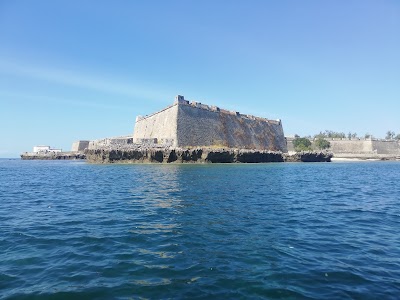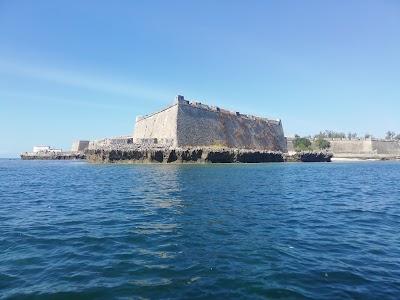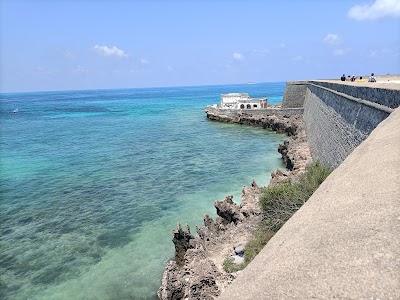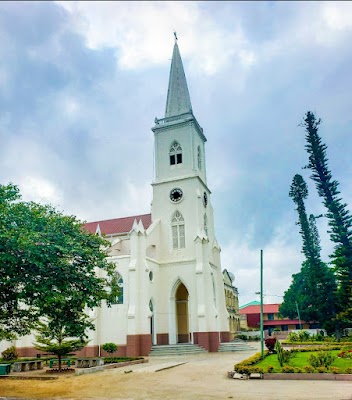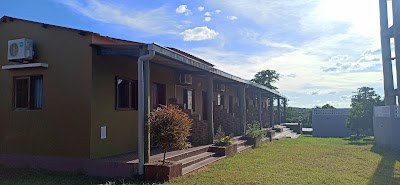Fort of São Sebastião (Fortaleza de São Sebastião)
Overview
Nestled in the enchanting Sofala Province of Mozambique, the **Fort of São Sebastião** stands as a remarkable testament to the region's rich colonial heritage and ambitious maritime history. Constructed by the Portuguese in the 16th century, this fort serves as a striking reminder of the era when European powers vied for dominance and sought to protect their trade routes along the East African coast.
Upon arrival, visitors are greeted by the impressive, well-preserved stone walls that have withstood the test of time. Built between 1558 and 1566, the Fort of São Sebastião is celebrated as the oldest complete fort still standing in sub-Saharan Africa. Its robust and strategic design showcases the military ingenuity of the Portuguese, who aimed to safeguard their interests from rival forces, including the Dutch and Omani Arabs, as well as pirate incursions threatening their lucrative spice and gold trades.
The **historical significance** of this fort is immense. It wasn't merely a military stronghold but also a symbol of Portuguese power and influence in the Indian Ocean. As you explore the fort’s expansive grounds, you can almost hear the echoes of history—colonial soldiers strategizing their defenses, traders bustling with goods, and local inhabitants interacting with European settlers. The walls, constructed from stone blocks fortified with coral, narrate tales of resilience against both man-made and natural adversities, from invasions to the harsh coastal weather.
A stroll through the fort introduces you to its various sections, each telling a unique story. The bastions offer panoramic views of the turquoise Indian Ocean, which once teemed with ships. Here, you can reflect on the strategic importance of this location in controlling maritime activities. The old armoury, quarters, and chapel within the fort are poignant reminders of daily life for the soldiers stationed there. Informative plaques and interpretive signs guide visitors through the site, sharing tales of bravery, commerce, and conflict.
A particularly intriguing feature of the Fort of São Sebastião is the **Chapel of Nossa Senhora de Baluarte**, constructed adjacent to the fort. Often regarded as the oldest European building in the Southern Hemisphere, dating back to 1522, this quaint chapel offers insight into the religious dimensions of the Portuguese colonists' lives. It serves as a serene spot for contemplation amidst the broader historical context of military engagement.
The fort is not merely an ancient relic; it remains a dynamic part of the community through ongoing conservation efforts aimed at preserving its structure and educating the public. Today, the site serves as a symbol of shared heritage, attracting both locals and international tourists eager to delve into the layered history of Mozambique.
For those eager to explore further, **guided tours** are often available, providing deeper insights into the historical intricacies and architectural significance of the fort. These tours enrich your visit by offering engaging narratives that breathe life into the ancient stones.
In terms of practical information, the fort is conveniently located near the bustling city of Beira, making it relatively accessible by road. The best time to visit is during the dry, cooler months from May to November, ensuring a comfortable experience as you wander through this historic landmark. Photography enthusiasts will find ample opportunities to capture the fort’s majestic silhouette against the vibrant Mozambican sky.
As you leave the Fort of São Sebastião, you'll carry with you a deeper appreciation for Mozambique’s vibrant past and a recognition of the country’s role in global history. This fort is more than just an architectural marvel; it symbolizes cultural confluence, maritime prowess, and the enduring resilience of a nation. Whether you are a history buff, a casual visitor, or an avid explorer, the Fort of São Sebastião promises an enlightening and unforgettable journey into the annals of time.


